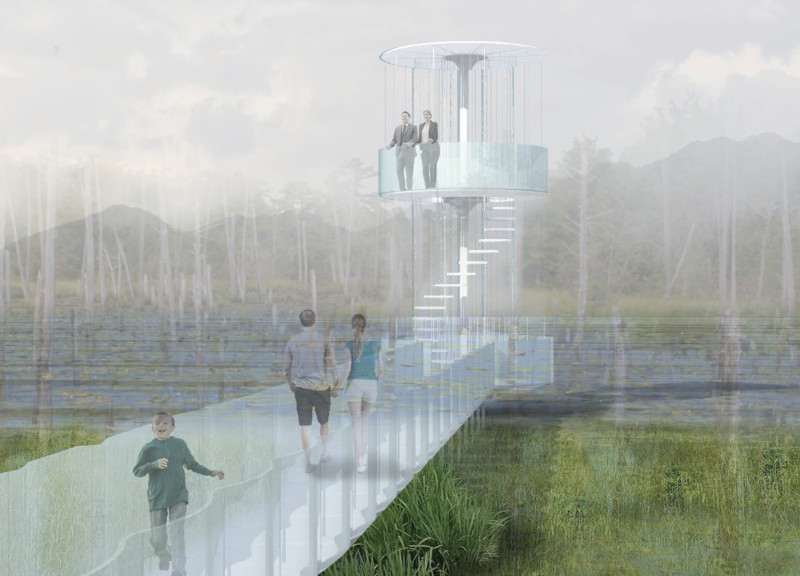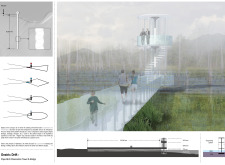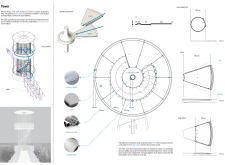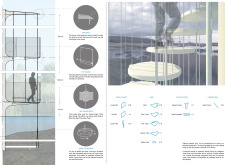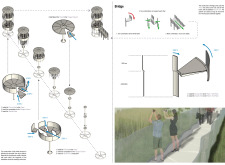5 key facts about this project
Functionally, the observation tower allows visitors to immerse themselves in the unique landscapes of the wetland while offering varying perspectives from its circular design. This approach encourages exploration, as users can ascend through a spiraling staircase that connects multiple observation platforms. The layering of these platforms facilitates a fluid experience, allowing visitors to choose their height while providing continuous access to unobstructed views. This thoughtful design motivates individuals to engage with the environment actively, creating a sense of exploration and discovery integrated within the architecture itself.
Several key components elevate the project beyond traditional observational structures. The circular form of the tower is vital to its identity, creating a sense of openness, while also ensuring that it blends seamlessly into its natural setting. The use of transparent materials, particularly acrylic glass, supports the structure’s light aesthetic and invites natural light into the interior spaces. This careful selection of materials not only strengthens the architectural integrity but also enhances the visual connection with the surrounding landscape, allowing the environment to play a crucial role in the experience.
A notable aspect of the project is its environmentally conscious approach. The elevated design ensures minimal disruption to the local ecosystem by allowing water to flow freely underneath the structure. This feature emphasizes the project's commitment to ecological balance while actively promoting awareness of the wetlands and the species that inhabit them. Furthermore, the innovative assembly techniques employed in the construction reduce the footprint of installation, echoing the project’s sustainable ethos.
Unique design approaches are evident in the overall structural system utilized for the tower. The modular assembly technique allows for efficient installation while ensuring structural stability. Each component interlocks effectively to create a coherent whole, resembling systems found in modular constructions. This methodology not only streamlines the construction process but also highlights the adaptability of the design, allowing it to suit the dynamic conditions of the wetland habitat without overwhelming it visually.
The project successfully merges aesthetics and function, creating a space that invites contemplation and interaction. The transparent materials and lightweight construction foster an experience of being surrounded by nature rather than enclosed within a built environment. Visitors are encouraged to explore the observation points, each offering a unique vantage of the wetlands, fostering a deeper appreciation for the beauty of the ecosystem.
For those interested in further understanding the project, it is worthwhile to explore the comprehensive architectural plans, sections, designs, and ideas that underpin this thoughtful architectural endeavor. Delving into these details will provide a richer perspective on how the project exemplifies innovation in both design and environmental consciousness. The Pape Bird Observation Tower and Bridge stands as a testament to modern architectural practices that prioritize ecological harmony and community engagement, inviting visitors to engage meaningfully with their environment.


